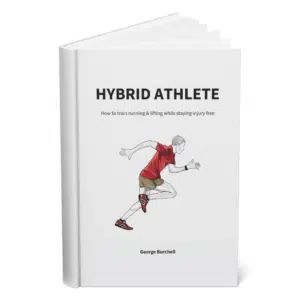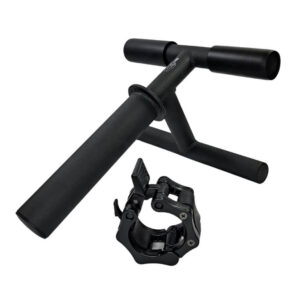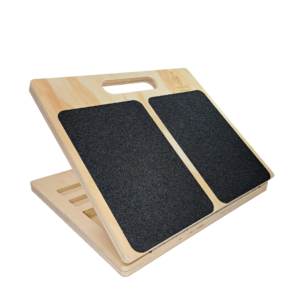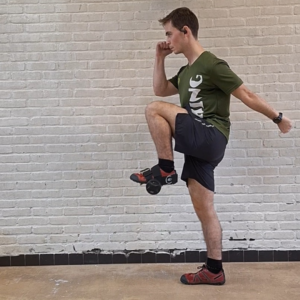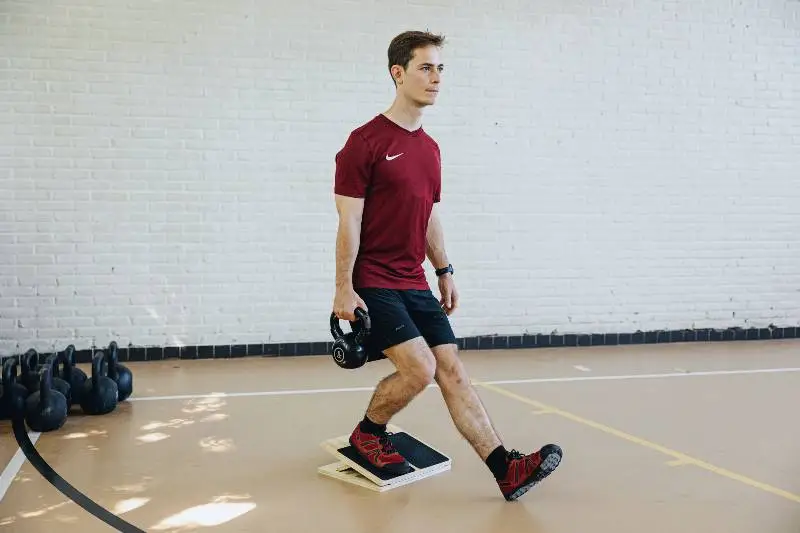
Reverse step-ups entered the mainstream fairly recently. They come in many variations, and athletes around the world started implementing them in their lower-body routines and KOT programs.
The most important thing about the reverse step-ups is that they actively engage the whole foot-ankle-knee-hip kinetic chain.
Let’s talk about the reverse step-up benefits and the 3 step-up variations that can help you bulletproof your legs.
Table of Contents
REVERSE STEP-UP BENEFITS
There’s no single group of athletes that benefits from reverse step-ups the most. This type of exercise is used both in injury recovery and injury prevention; the answer lies in the latter.
Thanks to the nature of these movements, the athletes who benefit the most would be runners and people who play sports with a lot of running and/or sudden movement changes.
The knee-over-toes range of motion significantly helps with breaking the mobility plateau.
As we mentioned, the reverse step-up helps you build that ankle-knee-hip connection by activating the muscles we use for stabilization. This directly translates to better muscle synchronization, which leads to:
- A more stable running gait, leading to better overall performance
- Faster recovery of lower-leg muscles and tendons
- Better control during squatting and lifting
- Less stress on your knees due to balanced weight distribution
- More control over your natural body leverages
So, we can safely say that anyone who moves a lot can benefit from reverse step-ups, be it for recovery or injury prevention.
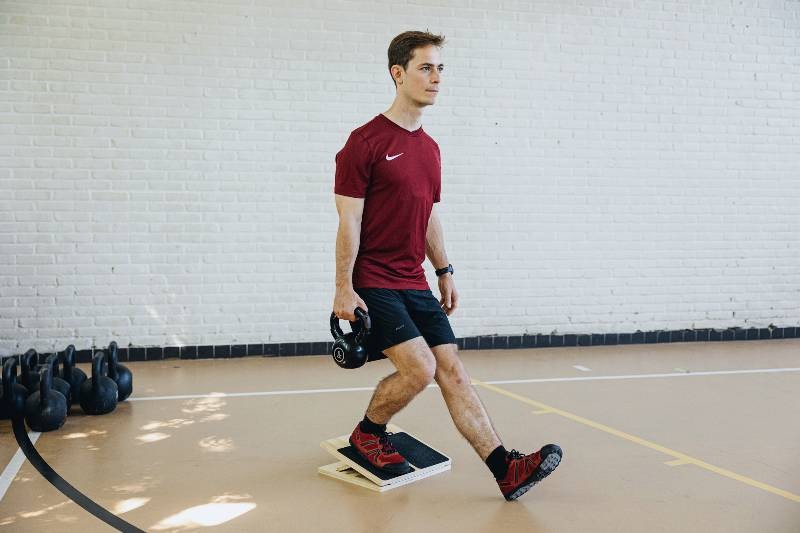
THE 3 REVERSE-STEP-UP PROGRESSIONS
This is the reverse step-up trio that Hybrid Athlete believes in. These foundational exercises will help you develop better coordination, as well as help you build strength and mobility in the lower body.
All of these are done on an elevated surface, so make sure you start slowly. In case you can’t do it right away, grab onto something with your hand for balance (or use a stick).
1. PATRICK STEP-UP
Named after Ben Patrick from ATG, the Patrick step-up variation is the perfect start to prepare your ankles and knees.
The benefits of Patrick Step-up
- Ankle mobility – keeping your heel down during movement promotes healthy dorsiflexion
- Light VMO (vastus medialis oblique) activation – crucial in knee stability
- An active stretch of the Achilles tendon
How to do Patrick Step-ups
- Stand on an elevated surface that allows your knees to go over your toes
- Shift your weight to your active leg, and lower the other leg from the platform
- While keeping your active-leg heel down, touch the floor with your other leg’s heel
- Go back up in a controlled manner and go for reps
*It’s important to push your active-leg knees over the toes while keeping your heel down. Another good cue for your other leg is to try to raise your other leg toes up while you reach for the ground with your heel.
2. POLIQUIN STEP-UP
Consider this a level-up of the Patrick step-up, where we introduce an incline for the working leg. You can achieve this with a slant board, or with some sort of wedge.
We’ve covered the Poliquin Step-up as a separate topic (HERE), but it never hurts to go through the basics.
The benefits of Poliquin Step-up
- Knee stability through VMO strength
- Low intensity and short ROM allow high volume – aka great for hypertrophy
- Core and hip stability – the unilateral nature of the movement helps with both
- Muscle imbalance correction which translates to virtually all other movements
- Tibialis anterior durability (on the non-working leg) as a side benefit
How to do Poliquin Step-ups
- Start with a low slope on your elevated slant board. Stand on it in a neutral stance.
- Raise your non-working leg from the slant board, but keep your hips square and your upper body tight and upright
- Push it forward while switching the weight to your working-leg knee (try to feel the VMO)
- Touch the ground with your heel and start ascending (the further forward you push, the better)
- While going up push through your working leg to step up
3. PETERSEN STEP-UP
The Petersen step is a combination of the first two reverse step-up versions. However, this time the working-leg heel is raised to the full range of motion. The best way to visualize it is to imagine walking down the stairs and back, in a very controlled fashion.
So, the knee goes over the toes even further, since you can lift the heel of your working leg.
The benefits of Petersen Step-ups
- Strong VMO activation
- Significant increase in ankle dorsiflexion
- Knee stability and balance
- Light-to-medium posterior chain activation
- Neuromuscular connection
How to do Petersen Step-ups
- Stand on a flat elevated surface
- Push your non-working leg forward while descending
- Aim to touch the ground with the heel
- Allow your working-leg knee to go over your toes
- While balancing on the ball of your foot, raise your working heel and allow even more range of motion
- Step up back to the starting position by pushing through the ball of your foot
*Keep your hips squared throughout the movement and don’t allow your pelvis and hips to tilt.
HOW TO PROGRESS REVERSE STEP-UPS?
Almost every version of reverse step-ups comes with a more difficult version. The main two ways to make step-ups more challenging are:
- Add weight (resistance bands, kettlebells, dumbbells, or even a barbell)
- Increase the slant board angle on step-ups that involve an incline (like the Poliquin step-up)
Remember, while these exercises may look naive, they can tackle certain muscles (especially the VMO) quite efficiently. So make sure to never work through pain.
IN CONCLUSION
There’s no reason not to implement the reverse step-up (or several versions of it) into your weekly routine. They don’t stress your body much but bring a lot of benefits to the table. So, you can go for high frequency and expect a fairly quick recovery.
So, start building strong knees and ankles so you can run far and lift heavy!
Get the best bulletproofing exercise equipment:
GET THE BEST INJURY-PREVENTION TRAINING EQUIPMENT:
Above all, a storyteller. Then comes marketing, branding, writing music, powerlifting, and woodworking.

